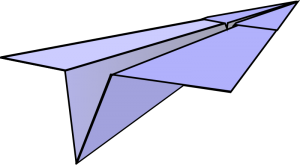Moving and falling objects: Difference between revisions
No edit summary |
No edit summary |
||
| (One intermediate revision by the same user not shown) | |||
| Line 14: | Line 14: | ||
|strategy= | |strategy= | ||
|Learning Objectives= | |Learning Objectives= | ||
* | * Having some ideas for teaching 'moving and falling objects' to primary children. | ||
* | * Understanding the concepts relating to 'moving and falling objects' and how to build progression into your curriculum planning. | ||
* | * Collating information regarding further readings. | ||
|additional resources= | |additional resources= | ||
|useful information= | |useful information= | ||
|related resources= [[Progression & questioning techniques in primary science projects]] | |related resources= [[Progression & questioning techniques in primary science projects]] | ||
|other= | |other= | ||
|format=1 PDF | |format=1 PDF [[File:TE008 Moving and Falling Objects.pdf]] | ||
|resources=An article from ''Primary Science Review'' - [[File:TE008 Moving and Falling Objects.pdf]]. Originally published by ASE in ''Primary Science Review'', (62), March/April 2000. | |resources=An article from ''Primary Science Review'' - [[File:TE008 Moving and Falling Objects.pdf]]. Originally published by ASE in ''Primary Science Review'', (62), March/April 2000. | ||
|licence={{PaulWarwick}} | |licence={{PaulWarwick}} | ||
Latest revision as of 14:29, 5 December 2012
About. This lesson provides background knowledge on the topic of moving and falling objects linked to activities appropriate for different age groups.
Pedagogical content. This published article explores the sorts of objectives(ta) they should be meeting, and the questioning(ta) teachers may engage in. The activities, aimed at progressively older children, engage them in inquiry(ta) based learning. The article explores how increasingly complex topics may be taught, and how teachers can ensure that children have a good grasp of a topic. There are suggestions for further reading to extend the primary teacher's knowledge of the area. Some of the suggestions appear in a related resource Progression & questioning techniques in primary science projects (edit)
| Resource details | |
| Title | Moving and falling objects |
| Topic | [[Topics/Force|Force]] |
| Teaching approach | [[Teaching Approaches/Objectives|Objectives]], [[Teaching Approaches/Questioning|Questioning]], [[Teaching Approaches/Inquiry|Inquiry]] |
| Learning Objectives |
|
| Format / structure | |
| Subject | [[Resources/Teacher Education|Teacher Education]], [[Resources/Science|Science]] |
| Age of students / grade | [[Resources/|]]
|
| Related ORBIT Wiki Resources | |
| Files and resources to view and download | |
| Acknowledgement | This resource was adapted from resources and original ideas contributed by Paul Warwick, at the Faculty of Education, University of Cambridge. |
| License | This resource was adapted from resources and original ideas contributed by Paul Warwick, at the Faculty of Education, University of Cambridge. |


